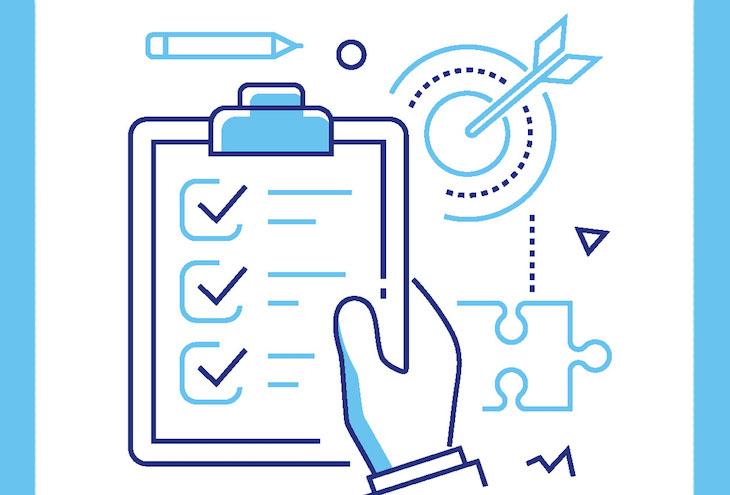Does this sound familiar? You’re logging long hours, but no matter how hard you try, your to-do list keeps growing. Worse, while you have your share of successes, important things sometimes slip through the cracks of your action-packed days. But take heart. Adopting some strong organizational habits could be the key to making your work life much more productive — and far less stressful.
Set objectives
We all have competing priorities. Setting daily objectives can help you stay on track and meet your commitments. But realistic planning and prioritizing takes more than making a well-intentioned list. At the end of each workday, map out the day ahead. “Don’t wait until the last minute to think through what you want to accomplish,” advises Professional Coach and Organizer Linda Samuels. “Before going to sleep, review what needs to be done the following day. Ask yourself if there is anything that you can do now to help make tomorrow run more smoothly.”
Commit your time
Put yourself on a schedule and hold yourself accountable for getting certain tasks completed by a specific time. While this takes real focus and discipline — especially if you’re working virtually — it will also yield results. “’Chunk’ your time,” suggests Jody Michael, executive coach and CEO of Jody Michael Associates. “Designating blocks of time to focus on administrative tasks, meet with team members, or respond to messages and emails can significantly enhance your efficiency rather than trying to get these done throughout the day.” Another helpful tool is scheduling in a few time buffers. For example, if you have a 30-minute meeting starting at 2 p.m., block out 2–2:45 p.m. on your calendar and give yourself the extra 15 minutes to handle something unexpected, file meeting takeaways, or stretch your legs.
Use technology for good
“All our technological advances, like computers, tablets, and phones, don’t really give us more time, contrary to popular myth,” observes Michael. “If anything, they contribute to time pressure.” With so many screens at our disposal, it’s easy to get derailed, especially if we have to complete an assignment that isn’t exactly our favorite. Make your work screen your top priority, and consider giving yourself the reward of an occasional social media scan or funny text after meeting a deadline or wrapping up a pesky project. Try using your phone more for reminder alarms and less for activities that can quickly zap your time and energy.
Clear your space
“Ask yourself if clutter is getting in your way,” says Samuels. “Cluttered areas make it more challenging to focus your attention. Lessen the ‘stuff’ in front of you and it will become easier to stay organized and focused.” Even if you don’t have a dedicated office, create a line of sight for yourself that’s free of distractions. If you’re working from home, make it a practice to take care of household chores and bill-paying before or after work, and keep that laundry bin and online banking app out of view during office hours.
Clear your cache
Our days are full of potential diversions and competing priorities. Just as you sometimes need to clear the cache of your computer, recognize when you need to take a moment to clear the cache of your brain. If your brain is busy thinking about too many upcoming obligations at once, consciously set them aside by taking a moment to write them down digitally or on a notepad, and revisit them when you regroup at the end of the day. When you can calm an overactive mind, you’ll be better able to focus on getting the most important things done first, then dealing with the rest. Clarity of mind puts you in a position to work more efficiently and make fewer mistakes. Remember that while there are no short-cuts to getting things done well, it’s much easier to make professional progress when you work without self-imposed stress. When you work smarter, you’ll have happier, more successful workdays.
 On Topic
On Topic
Luke Jason Schrimsher, Cherokee Nation, is a nondestructive evaluation engineering technical associate at Lawrence Livermore National Laboratory (LLNL). He began his career in U.S. Army aviation and continued to learn trade skills after completing his service. Among his technical certifications are Airframe and Powerplant License from the Federal Aviation Administration and Level 3 Certification from the American Society of Nondestructive Testing. He earned an AS degree in Aviation Maintenance and a BAAS in Aviation Science at Eastern New Mexico University while working full time. He is currently pursuing a master of education degree. Since joining LLNL Materials and Engineering Division in 2015, he has supported material evaluations using X-ray, ultrasound, and other methods similar to many techniques used in health sciences. He was raised in an environment that supports personal development through education while learning through scientific application. It is important to him as a Cherokee to give back to the community, and he enjoys helping others achieve their goals through mentoring. He is honored to have been elected to serve as co-chair for the LLNL American Indian Activity Employee Resource Group
What is your top tip for starting the work week?
Quickly review the task list from the previous week and consider any loose ends or follow-on actions that are needed.
Why is it important to create a personal organization system?
Distractions and changing priorities are a challenge in the work environment. Developing routine workflow and organization systems helps me remember my last actions and helps me easily restart a project.
How do you know when your system needs tweaking?
I perform a personal “lessons learned” session to identify how I should improve when I forget something or miss a schedule.
How effective are to-do lists? Can you suggest an alternative to tracking tasks?
To-do lists are a cornerstone in my method of organization. I maintain a written list for long projects and reorganize this list as priorities change. That list is also handy even years later. I like to review my old lists and remember where, when, and how a project started or when I started working with a new colleague. I use sticky notepads for short-term projects and quick reminders for the next day.
What is paramount to setting up an efficient physical workspace?
Creating a permanent place for objects and tools and returning those items to their place at the end of a task is important. This saves me a lot of time. I do not need to search for misplaced tools and others benefit from a clean workplace when we are working together.
Organization isn’t always one size fits all. What are your top three resources for developing a system that works for you?
Safety Management Systems: I learned about effective organization in the workplace from studying and practicing safety management systems in the aviation industry. Six Sigma is one program that suggests techniques for process improvement.
Teamwork: Enlisting others to help organize and keep areas organized is a great resource. Our ideas as a team are often better than an idea from a single person.
To-Do Lists: Create a running list of pending projects. This list can be in a notebook or saved in a computer program, but it must all be in one place. Computer programs that manage task lists are great if that fits your workflow. If I am working in the field and have no computer available, then my handwritten notebook of tasks works well.











